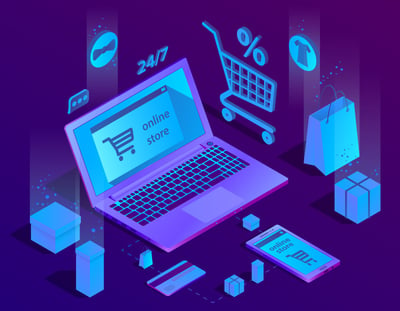September 20, 2023
 by Khuslen Khosbayar / September 20, 2023
by Khuslen Khosbayar / September 20, 2023

The email channel is mature.
Most of what consumers receive from brands is fairly predictable - static messages with text, embedded images, and links that direct users to websites or mobile apps to take actions that eventually drive conversions and business growth.
However, Google’s introduction of accelerated mobile pages (AMP) for email in 2019 has shaken things up.
AMP for email enables dynamic and interactive emails, with forms, shopping carts, and live feeds embedded within the email, which make for highly engaging email marketing campaigns.
It gives you the power to bring the conversion funnel directly into your shoppers’ inboxes, which shifts the paradigm from the basic HTML emails that consumers are accustomed to.
AMP-powered emails function like apps or microsites - recipients can provide ratings, book appointments, browse and search from product catalogs, and write reviews without leaving the inbox.
This shortened pathway to action also leads to a frictionless user experience, reducing redirects and drop-offs, which is a difficult feat to achieve in today’s environment of attention recession. Ultimately, these improved yet simplified user experiences lead to customer loyalty, higher retention rates, and conversions for your brand.
With a myriad of use cases fitting for each stage of the shopper lifecycle for brands across industries, AMP for email can also go together with your personalization efforts to provide the most relevant and convenient experience for your shoppers.
The most significant appeal of implementing AMP for email right now, at the time of writing, is its novelty. First-mover advantage can help build expertise and differentiate your brand from competitors.
Let’s explore some key AMP for email features and differentiators, disruptive use cases, guidelines for implementation, and security mechanisms that ensure the safety of your customers’ data.
Interactivity is the main difference between traditional and AMP emails. What enables this key difference comes down to the building blocks of email.
Traditional emails are coded in HTML and CSS, therefore, static, while AMP emails utilize HTML, CSS, and JavaScript to provide interactivity within the email. As a result of this key difference, some other implications follow, as shown below.
| HTML emails | AMP emails |
| Use only HTML codes | Use HTML and JavaScript codes |
| Rely on landing pages for user action | Users perform actions within the email |
| Limited display options like text, images, GIFs, and tables | More display options like carousels, accordions, product cards, and so on |
| Cannot embed real-time data | Allows embedding data that updates in real time |
| Allowed by all email clients | Only supported by Gmail, Yahoo Mail, FairEmail, and Mail.ru |
| Does not need a fallback option | Needs a fallback HTML email option |
| Easy to code | Needs more coding knowledge |
Besides Gmail, AMP is supported by Yahoo! Mail, FairEmail and Mail.ru. This is excellent news for brands serving consumers in the US and globally.
Gmail is the most popular email platform, with over 1.8 billion users worldwide, owning 29.5% of the email client market share. Gmail also held a 53% share of the US email market in 2022 with 130.9 million users, while Yahoo! has 18%.
However, Apple does not support AMP, meaning if you open an AMP email in your iPhone mail app, you will only see the HTML fallback version of the email instead of the AMP-enabled one. However, the AMP email will be displayed for users with the Gmail app downloaded on their Apple devices.
The existing set of use cases for APM emails is not exhaustive. You can continue to discover new ways to engage your customers across every stage of the shopper lifecycle.
Here are a few inspiring use cases that brands have already adopted.
AMP-enabled emails allow users to perform product searches via website-like search bars for quick access to the products they seek within the email.
It helps to dynamically bring your product catalog into the inbox with personalized product carousels. Interactive elements allow shoppers to browse and evaluate options as well.
Source: Netcore Cloud
AMP emails help collect valuable information from your shoppers with forms that can function as quizzes, surveys, interactive forms, and preference collectors to improve customer targeting and personalization efforts via the zero-party data captured.
Source: Netcore Cloud
Add fun to your email campaigns by using interactive games to offer your shoppers discounts or rewards. For example, games such as “spin the wheel” help keep shoppers engaged with your brand.
Source: Netcore Cloud
AMP-enabled emails help offer customer support via an interactive chatbot within your email so that your shoppers can receive quick answers to their questions.
Source: Netcore Cloud
Brands find it increasingly difficult to capture shoppers' attention. Once you have a potential customer's attention, compress the pathway to purchase to keep them engaged.
This is where inbox commerce, powered by AMP for email, comes in.
Inbox commerce shortens the email conversion funnel by cutting the redirects in between, leading to frictionless conversion, saving shoppers time, and enhancing their satisfaction with your brand.
Source: Netcore Cloud
Inbox commerce shortens the traditional email conversion funnel by two stages. It allows shoppers to browse and search products, use promotions, rate products, and offer feedback all from within the email. This is the umbrella value proposition of Inbox commerce, with the other benefits shown below.
Source: Netcore Cloud
Visionary marketers are embracing the technology, shifting focus from the static inbox of the past toward an inbox commerce future.
Tip: Most B2C senders in the US can reach 30-60% of their email audience with AMP-enabled messages, with the rest receiving fallback HTML versions.
However, the experiences delivered to the segment receiving the AMP alone can generate up to a 10-times lift in conversions.
Implementing AMP for email may seem daunting at first, but it's simply a matter of getting approval from Google and building your AMP email. Let's review the process step-by-step to understand how it's done and how long it might take.
Ensure all the authentication mechanisms are implemented.
Authentication mechanisms include:
With DMARC specifically, an enforcement policy (p=reject / p=quarantine) is recommended by Google. It is also important to note that changing your DMARC policy without prior checks can lead to deliverability concerns.
Gmail’s security requirements help ensure user safety and privacy with dynamic emails.
Find a valid use case for AMP emails that suit your organization and industry. Based on your use case, start building your AMP email by combining the AMP components that meet your needs.
For example, if you want your email campaign to collect feedback, you would need the “amp-form” component. If your use case is to showcase new products, you would need the “amp-img” component to display the product images.
Register your “from” email address (also called sender ID) with Google. This does not register your entire domain. You will receive a specific email address approved for sending AMP emails. For example, if info@xyz.com is approved, you cannot send AMP emails from support@xyz.com.
Registration guidelines help ensure your email meets all the requirements and best practices. Then, you can send your production-ready AMP email to ampforemail.whitelisting@gmail.com from your production servers or a server with similar SPF/DKIM/DMARC/From:/Return-Path: headers, including the dynamic email multipurpose internet mail extension (MIME).
Submit Gmail’s registration form to be verified as a sender. Though they aim to respond to your request in five working days with further instructions, it usually takes around one to four weeks.
Before sending your AMP email for approval, you must double-check a few things.
Here is a checklist:
There are a few steps you should take to test your AMP emails:
Go to Gmail Settings > General > Dynamic email > Developer settings. On the dialog box that opens, whitelist the email address amp@gmail.dev.
Using their email validator, test your code to check if your AMP HTML code passes all the code tests.
Use Gmail’s AMP for email playground to visualize your email by embedding the code. You can also test it by sending it to your own Gmail address.
Also, remember to build your fallback HTML versions of your AMP email to ensure that your email content reaches your entire audience.
The AMP HTML content is to be sent in the tour email. You can use attributes to display dynamic values such as name, age as [%NAME%], [%AGE%], etc.
Ensure you add HTML in the content parameter, which will be rendered if AMP HTML does not work on a given client. Test the email again by sending it to a small test list via your ESP before sending it to your entire audience.
Test your AMP email with a small set of test accounts to check and fix any issues.
As the prior steps mentioned can occur concurrently, you can expect to go live with your AMP emails in about 30 days or one to four weeks. Once the sender’s email address is approved, it might take one week to take effect.
With rising concerns from consumers around the security of their personal information, data security, and privacy are now top of mind for all brands. If you're wondering how AMP for email meets this challenge, rest assured that AMP emails must meet Google's security and privacy requirements. This includes sender authentication and encryption, to ensure they're secure before reaching user inboxes.
Let’s go over these data protection protocols in more detail.
There are three email authentication frameworks that ensure the legitimacy of the sender of the AMP email:
An SPF record lists all authorized host names and IP addresses permitted to send emails on behalf of the organization’s domain.
When an inbound mail server receives an email, it compares the sender’s IP address with the authorized IP addresses defined in the SPF record. The receiving mail server validates the sender and decides if the AMP email should be delivered to the inbox.
DKIM adds a digital signature - a hash created by various components from within the message - to every outgoing email. These components are determined once the message is created and sent and cannot be changed after that point.
If these components change during transit, it denotes that the data is tampered with, and therefore, DKIM authentication will fail. DKIM works with SPF to ensure that the sender is legitimate and the message was not altered during transmission.
If outgoing messages do not pass the SPF or DKIM authentication, DMARC tells the receiving server what to do with the outgoing message from the organization.
DMARC provides three settings for failed DKIM validation - quarantine, reject, and none. Quarantined messages don’t reach the intended recipient unless the administrator passes them to their inbox.
AMP emails are encrypted using a cryptographic protocol called transport layer security (TLS). Encryption digitally converts information into a secret code, making the content indecipherable to third parties.
TLS uses symmetric encryption to secure private data by using the same key to encrypt and decrypt the data, and public key encryption uses different keys for encryption and decryption.
It has additional security features like authentication and integrity that help confirm the involved parties’ identities and detect any message forging or tampering attempts.
To send an AMP email, the sender’s domain and email ID should be registered and whitelisted by Google. This approval ensures the email is safe to deliver to the recipient’s inbox, bypassing spam filters.
AMP emails do not allow any ads to pop up in your emails. This feature ensures uninterrupted engagement with the AMP email. It also extends protection by not allowing malware and ransomware attacks, often disguised as ads.
AMP emails do not allow promotions of products or services through in-frame ads and restrict third-party providers from utilizing the data.
This mechanism protects user data and browsing activity by acting as an intermediary between the user’s computer and the websites they visit.
All HTTP requests inside AMP emails get proxied and stripped of cookies to protect user data. The user’s browser connects to the proxy, which forwards the traffic to the website they visit, receives the response, and sends it back to the user. To enhance privacy and security, real IP addresses are anonymous.
The future of email marketing is undeniably being shaped by the capabilities enabled by AMP for email. Its seamless integration of interactive and dynamic content within emails is a powerful tool that allows brands to meet their customers’ growing needs easily.
Customers can browse and search through the product catalog, provide product ratings and feedback, and receive answers to their questions via interactive chatbots in fewer steps and in a shorter time, demonstrating their dedication to providing customer-centric experiences.
Moreover, inbox commerce is up for the challenge of meeting the growing demands of customers and the changing digital environment, especially the growing concerns around personal data from consumers have led to tighter privacy regulations across the globe.
This means that moving forward, email marketers need to prioritize data security and obtain explicit consent for collecting and using user data. This puts increased importance on zero-party data, which is a key benefit of utilizing inbox commerce.
Secondly, consumers’ expectations for frictionless and convenient, and therefore personalized experiences will continue to challenge brands in the future.
While inbox commerce marks the beginning of another innovative period in email marketing, the most exciting opportunities lay in what AMP for email could achieve in combination with other email marketing technologies and strategies.
This technology offers an exciting path forward for forging personalization with interactivity and app-like capabilities within emails to offer tailored yet engaging experiences that foster meaningful relationships with customers that were impossible with the traditional email format.
With readily available solutions for many of the key challenges that brands face today due to growing consumer needs, inbox commerce is poised to become an integral part of any email marketer’s strategy for growth and building loyalty.
Email marketing software is an essential tool for businesses of all sizes. Learn how it makes it easy to create and send effective email campaigns that get results.
Khuslen Khosbayar is an Associate Product Marketing Manager at Netcore, where she combines her passion for technology and storytelling to drive product awareness and adoption of Netcore’s products in the US.
From fierce competition to evolving customer preferences, retailers have a lot to deal with.
 by Khuslen Khosbayar
by Khuslen Khosbayar
You already know customer engagement is more than a buzzword. It’s the difference between...
 by Evelina Milenova
by Evelina Milenova
Both dating and shopping make us want to feel special.
 by Inga Leder
by Inga Leder
From fierce competition to evolving customer preferences, retailers have a lot to deal with.
 by Khuslen Khosbayar
by Khuslen Khosbayar
You already know customer engagement is more than a buzzword. It’s the difference between...
 by Evelina Milenova
by Evelina Milenova


